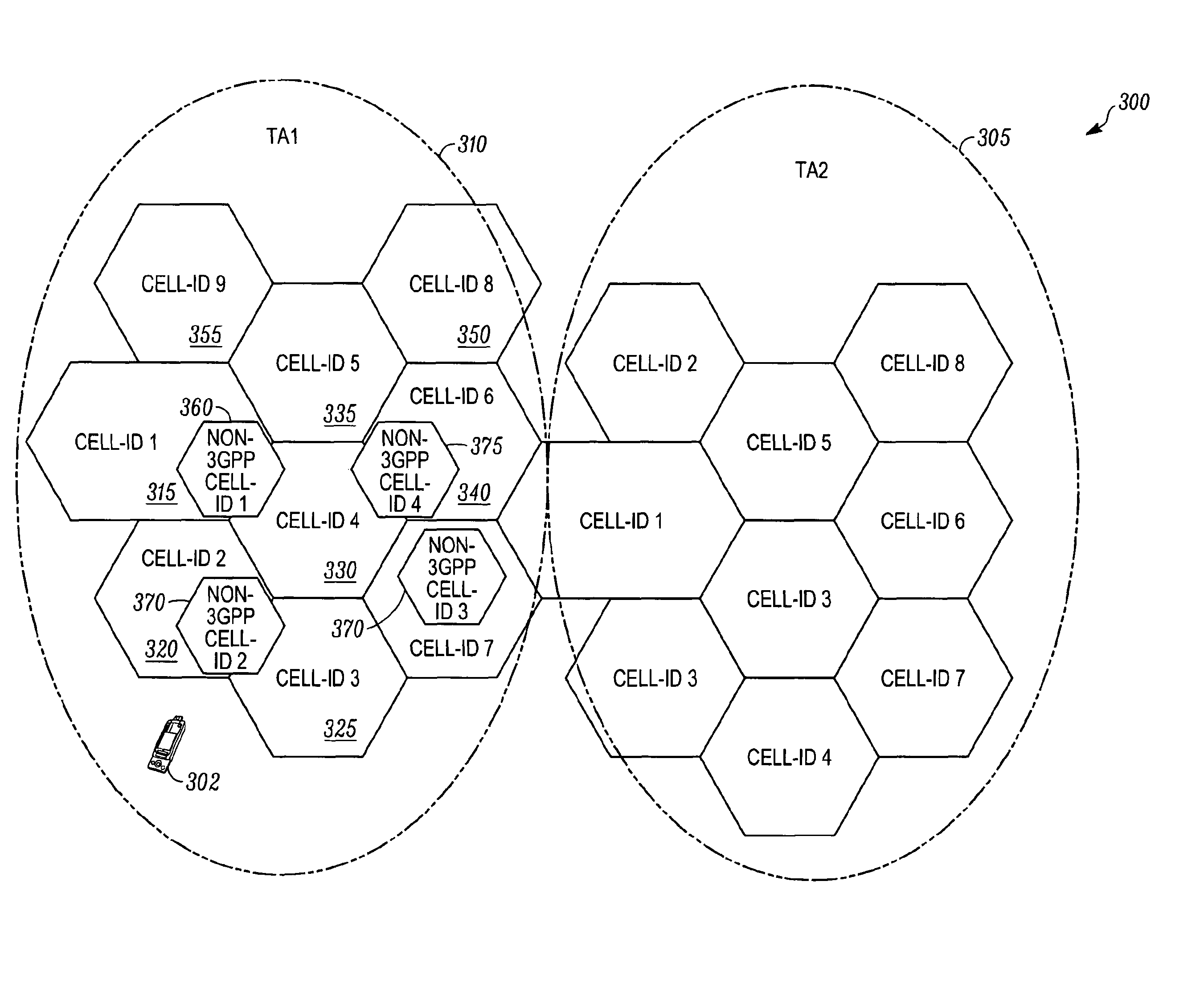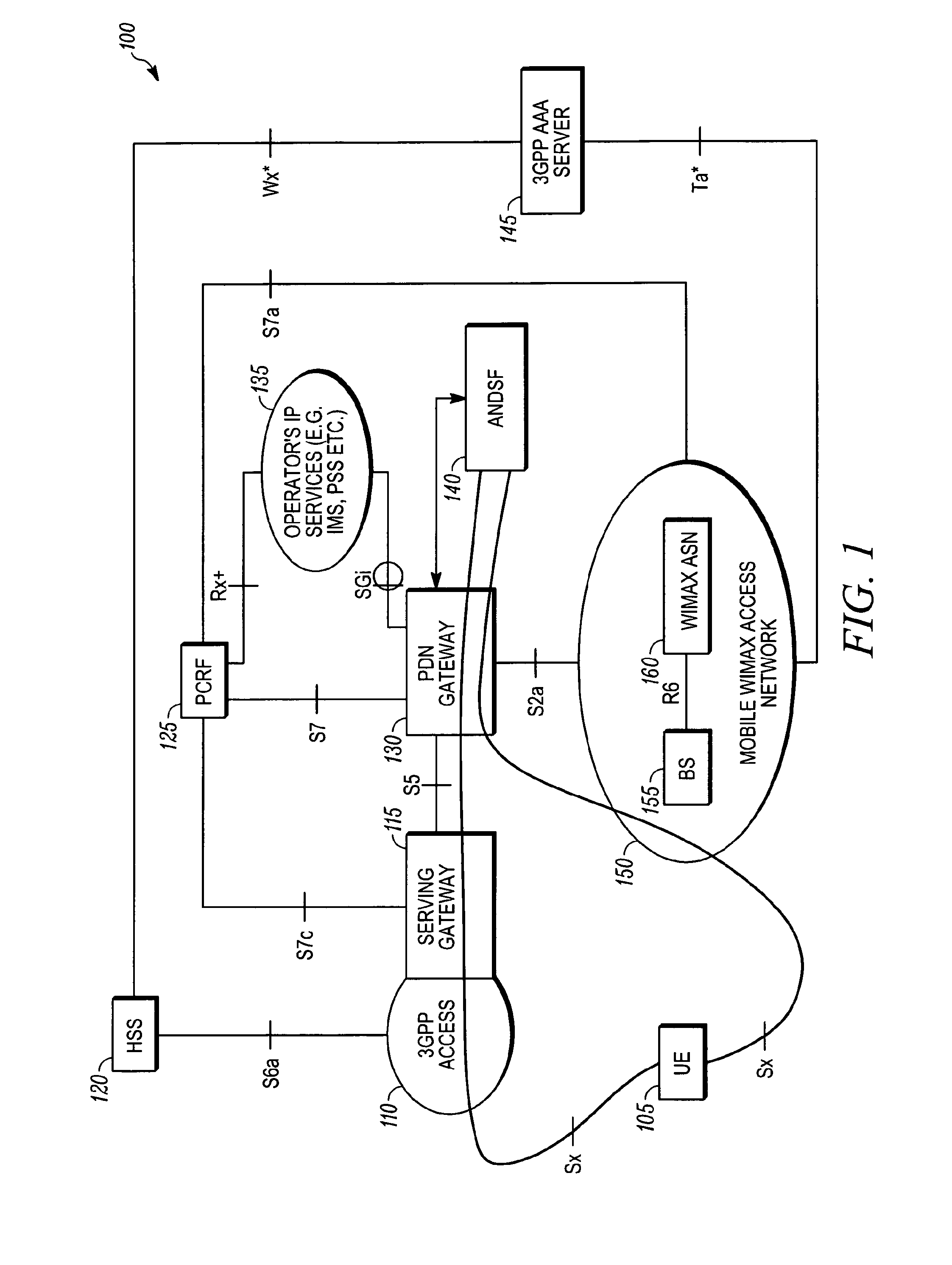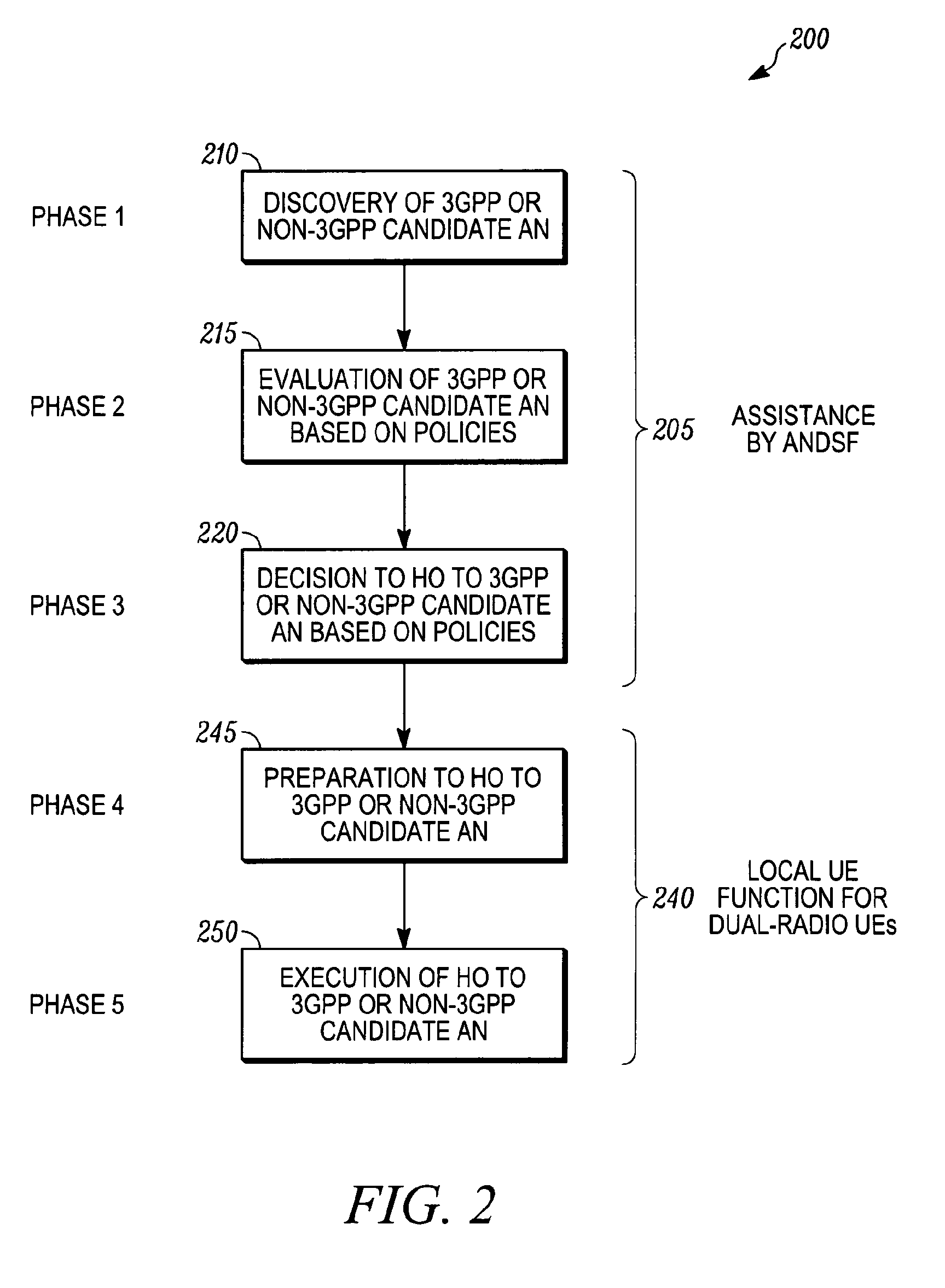Access network discovery and selection in a multi-access technology cellular communication system
a network communication system and access technology, applied in the field of access network discovery and selection in a packet data network communication system, can solve the problems of significant impact on the battery life of the ue, inefficient solution, and reduced performance, and achieve the effect of reducing, alleviating or eliminating on
- Summary
- Abstract
- Description
- Claims
- Application Information
AI Technical Summary
Benefits of technology
Problems solved by technology
Method used
Image
Examples
Embodiment Construction
[0050]Embodiments of the invention propose a mechanism for network discovery and selection in a system that comprises 3GPP networks (comprising multiple 3GPP cells) and non-3GPP networks (potentially comprising multiple distributed cells that overlap the 3GPP cells). One aspect that impacts the network discovery and selection of non-3GPP access networks by a current 3GPP UE is that the non-3GPP access network may often belong to a different Network Operator. Also, it is envisaged that the specifics of these networks, such as the operating frequency bands, may vary in different geographical areas. This may be either due to roaming in foreign countries, where the non-3GPP networks might be operating in different frequency bands than the UE's home network, or even due to the establishment of network sharing agreements from 3GPP Network Operators with various non-3GPP Network Operators, particularly in large geographical deployments. For example a Network Operator may have an agreement ...
PUM
 Login to View More
Login to View More Abstract
Description
Claims
Application Information
 Login to View More
Login to View More - R&D
- Intellectual Property
- Life Sciences
- Materials
- Tech Scout
- Unparalleled Data Quality
- Higher Quality Content
- 60% Fewer Hallucinations
Browse by: Latest US Patents, China's latest patents, Technical Efficacy Thesaurus, Application Domain, Technology Topic, Popular Technical Reports.
© 2025 PatSnap. All rights reserved.Legal|Privacy policy|Modern Slavery Act Transparency Statement|Sitemap|About US| Contact US: help@patsnap.com



